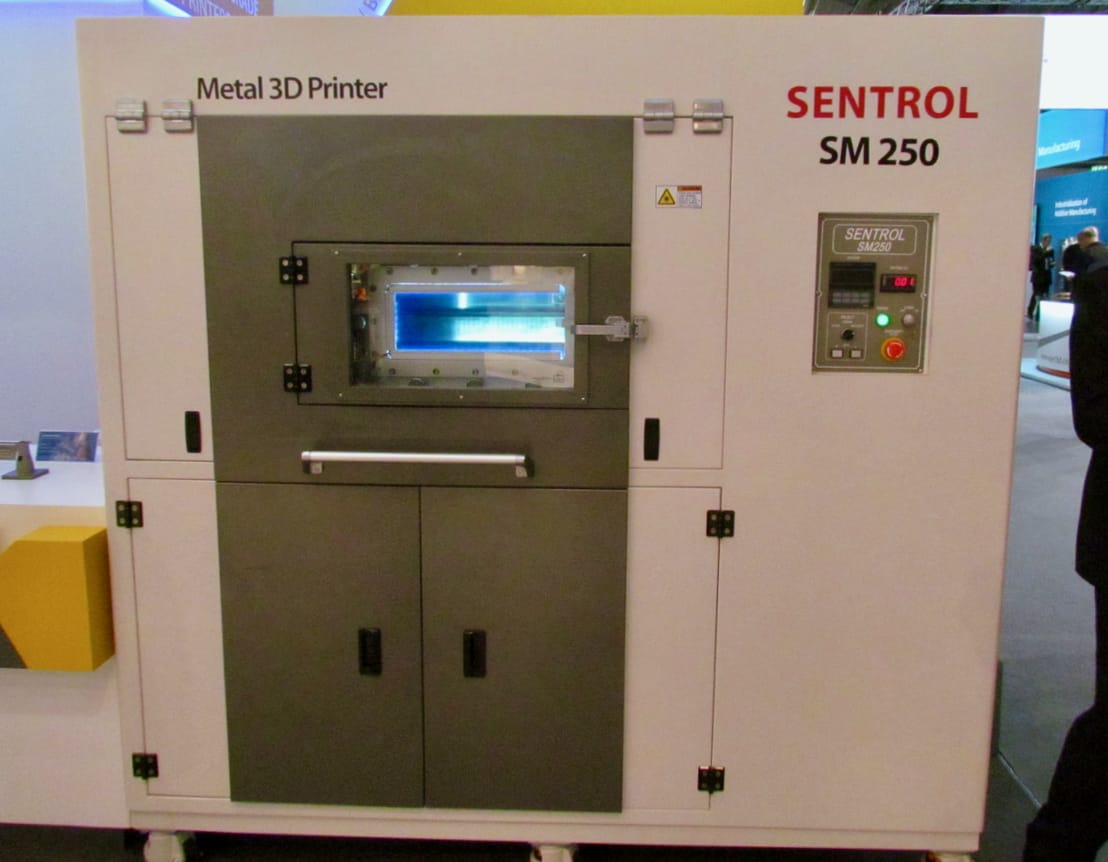
Korea-based Sentrol is one of several large Asian companies to introduce a line of powerful 3D printers for industry.
I’ve seen this pattern a few times: a long-time company with great experience in producing CNC machines decides to make a move into the 3D printing world by leveraging their expertise in mechanics. Sentrol is one of them.
The company was founded in 1985 and began by producing “Korea’s first CNC device”, the TEPS. Since then the company has introduced a number of different CNC machines, leading up the 2010 when “3D printer technology research” was initiated. In 2014 the company introduced a plastic filament-powered 3D printer, and in 2015 was able to produce a 3D metal printer, the SM150.
Today the company offers a number of different machines, including the powerful 3D metal printer, the SM 250 shown at top. The SM 250 has a 250 x 250 x 250mm build volume, whereas its predecessor, the SM 150, which is still offered, has a 150 x 150 x 150mm build volume. The SM 250’s CO2 laser can offer up to 1000W in power and can print layers as small as 0.02mm.
In addition to the two 3D metal printers, Sentrol also offers two similarly-sized machines, the SP 250 and SP 150, each of which are plastic 3D printers.
The company has four 3D sand printers on its product shelf that use selective sintering, with build volumes ranging from 150 x 150 x 150mm to a huge 1,800 x 1,200mm size for larger parts casting.
Sentrol also offers two more 3D sand printers that use a binder-jet approach: the B4500 and B1800, which are far larger. The B4500 has a build area of 4,500 x 4,500, making it perhaps the largest 3D printer we’ve seen, barring outdoor building sized experimental apparatuses.
But the really interesting machine is their “hybrid” machine, the HM 250. It’s essentially their SM 250 3D metal printer, but it also includes an on board CNC milling system.
In the HM 250, as the 3D metal print proceeds, you are able to engage the CNC mill to smooth out the rough areas of the printed metal surface. Thus when the print finishes, you should have a very smooth, usable metal object. However, this technique does have some geometric limitations as imposed by the structure of the CNC mechanism.
But it does include an auto-tool changer, meaning it can swap out bits on the mill on the fly, all by itself. This means it can select the optimally sized and shaped bit for the material and geometry involved. I am not sure, but this may be the only 3D metal printer that has an on board auto-tool changing CNC mill.
The set of machines from Sentrol are impressive, and they could be available at a good price. I’m told the SM 250, for example, goes for USD$300K, which is not that bad a price for such equipment these days.
Via Sentrol

